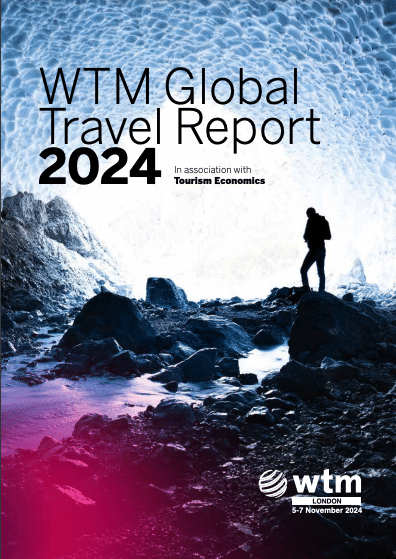Three things we learned at WTM 2024

The trajectory of tourism industry growth is undeniable and rife with dynamic global opportunities.
In association with Tourism Economics, the WTM Global Travel Report 2024 was unveiled at the World Travel Market in London, November 2024. With data amassed from 185 countries worldwide as both destinations and origin markets, an overview of the latest trends shaping the global travel landscape and growth projections were showcased.
Here, Palm PR shares a snapshot of the key results in numbers and trends from the comprehensive outlook. Read the full WTM Global Travel Report online.
Report snapshot
STATS SHOW THE STRENGTH OF TOURISM RECOVERY & GROWTH TO COME
Global leisure tourism expenditure in 2024 is now worth over $5.5 trillion, 24 per cent higher than 2019. In addition, analysis further showed the importance of blended business and leisure trips.
Whilst recovery and growth since 2019 has been dominated by domestic demand, international travel is expected to be a key growth driver of the industry, with projections estimating a rise to 2 billion international tourism arrivals worldwide by 2030, a growth of 30 per cent. Within this, consideration must be placed on both advanced and emerging markets as the industry looks forward.
Palm PR POV: The travel and tourism industry is buoyant with dynamic growth opportunities, but diversifying markets and ensuring a focus on international considerations is key.

Accommodation spend is not slowing down
The latest data showed that global accommodation spending is 24 per cent higher than 2019 levels, a stat that is expected to grow by 63 per cent over the next decade. As Travel Economics quoted on the WTM stage, this growth represents an increase of $1 trillion in accommodation expenditure. Not only is spend on the rise, but cut of travel spend is higher too with accommodation now accounting for 19 per cent of total tourism spending in 2024.
Palm PR POV: Despite high competition, especially in the luxury hotel space, accommodation providers who can meet evolving consumer preferences with agility are set to emerge as winners with demand high. Consumers are already and will continue to spend on accommodation as key to any travel experience.
Adventure, authenticity and cultural connections are key trend drivers
Whilst not a surprise, established travel trend drivers were highlighted as key to consumer decision and spending considerations. A desire for adventure tourism, longer trips and slow tourism, authentic cultural experiences and meeting locals, showcations (hello Swifties) and consideration of the journey not just the destination were all noted as trends set to continue. Speaking of cultural connections, interest in sampling local food and drink is 92 per cent higher than 2019.
Sustainable tourism is important, but data reveals awareness and action are not yet aligned in consumer decision making with 83 per cent of respondents agreeing that sustainable travel is important but only 57 per cent intending to reduce energy consumption on future trips. It remains key for tourism providers address sustainability meaningfully, but to inspire demand and action we must utilise multifaceted approaches industry-wide.
Palm PR POV: The increasing demand for truly authentic experiences offers new opportunities for both destinations and businesses, including hoteliers whether they speak to a luxury or mid-market audience. Furthermore, connection to place and landmarks must be considered, whether that be on a neighbourhood level or larger scale. Events and showcations are also key, and another example of the power of cultural phenomena in travel purchasing parity, as setjetting has shown.
Key Takeaways:
- Global tourism growth is not slowing down, with international travel set to rise
Hoteliers have strong opportunity to capture increased accommodation spend
- Cultural connections and authentic experiences remain key drivers of travel and accommodation decision making
- Sustainability awareness has not yet aligned with consumer action
- All travel and tourism businesses must adapt with agility to evolving consumer needs, as demand does drive change



